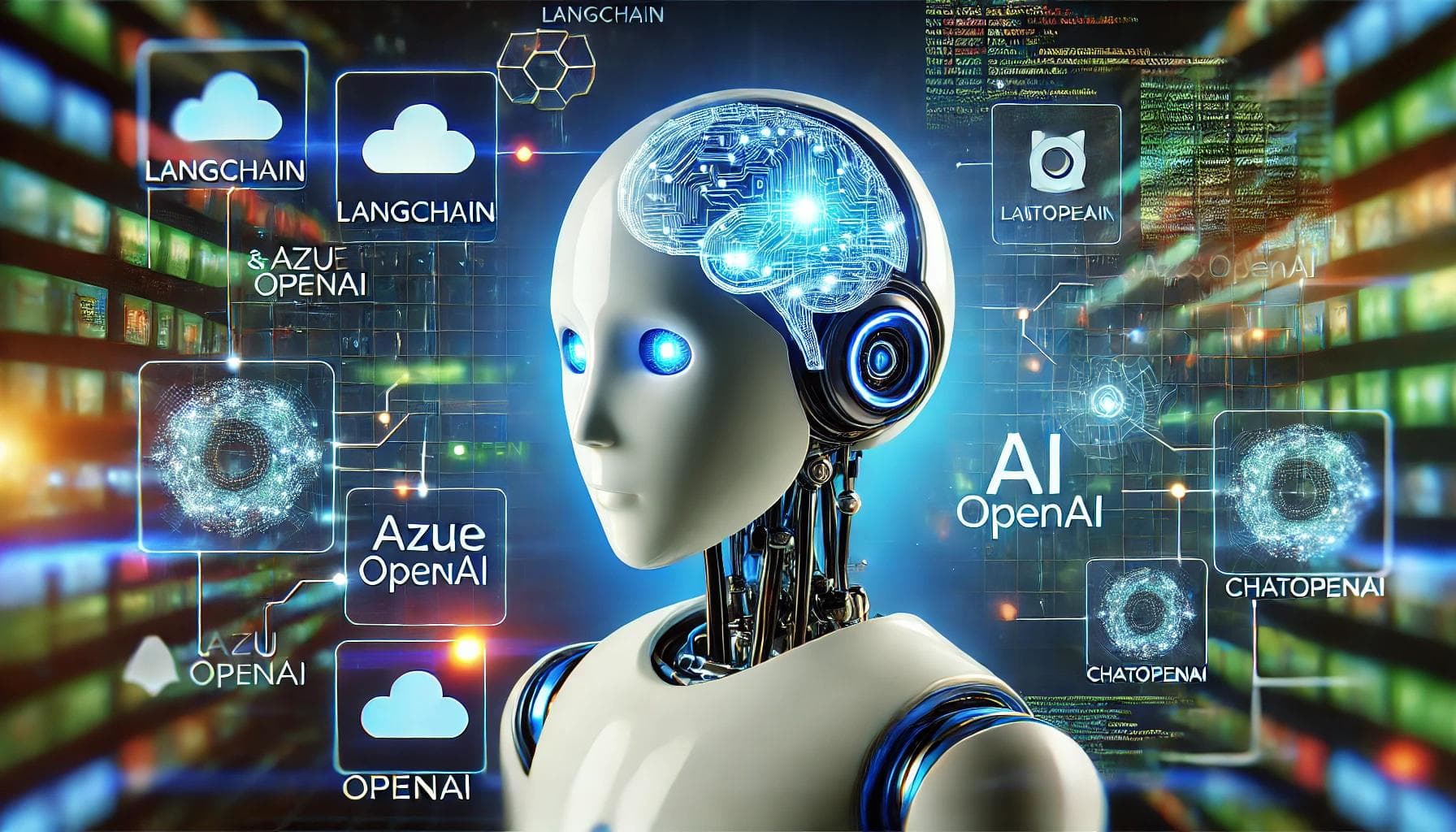Unlock the potential of AI in your applications with this detailed, beginner-friendly guide. Learn how to integrate ChatOpenAI with LangChain and Azure OpenAI, enhancing your projects with powerful conversational AI.
TL;DR: Quick Guide
- Install LangChain and set up ChatOpenAI for seamless development.
- Configure the ChatOpenAI class with your OpenAI or Azure API key for authentication.
- Create and run a chat function to interact with AI models.
- Understand the differences between OpenAI and ChatOpenAI to optimize your integration.
Introduction to ChatOpenAI and LangChain
In the world of AI, building an application that can engage in natural conversations is a valuable tool. ChatOpenAI provides a user-friendly API that simplifies integrating AI-driven chatbots into your projects. LangChain, on the other hand, is a Python library designed to streamline working with language models, enabling developers to construct robust language applications with ease.
This article will walk you through the steps of integrating ChatOpenAI into LangChain and also explore how you can use Azure OpenAI for enhanced scalability and security.
Getting Started with ChatOpenAI and LangChain
Imagine you’re building a chatbot for a customer service application. Here’s how you can give it a "brain" (ChatOpenAI) and a "body" (LangChain) to make it work seamlessly:
Setting Up Your Development Environment
Before diving into code, ensure you have Python installed on your system. You’ll also need a virtual environment for managing dependencies. Think of this like preparing your workspace before starting a big project.
bashCopy codepython -m venv langchain-env
source langchain-env/bin/activate # On Windows, use `langchain-env\Scripts\activate`
Installing LangChain
LangChain is a powerful library that simplifies the integration of AI language models. You can install it using pip:
bashCopy codepip install langchain
Importing ChatOpenAI
Now, let’s bring in the "brain" of your chatbot. The ChatOpenAI class is available through LangChain and is easy to import:
pythonCopy codefrom langchain.chains import ChatOpenAI
Configuring ChatOpenAI
To connect the brain to the internet, you need an OpenAI API key. Think of this as your chatbot's Wi-Fi connection. Here’s how to set it up:
pythonCopy codechat_model = ChatOpenAI(api_key='your_openai_api_key')
Creating a Conversation
With everything set up, you can start interacting with your AI model. Here’s a function that handles the conversation:
pythonCopy codedef chat_with_openai(prompt):
response = chat_model.chat(prompt)
print("AI says:", response)
Running the Chat
Now, let’s test our setup by sending a simple prompt to the model:
pythonCopy codechat_with_openai("Hello, how can I help you today?")
Chatting Through Azure OpenAI
If you prefer using Azure’s cloud platform, you can integrate ChatOpenAI with Azure OpenAI services. This allows for more secure, scalable deployments.
Step 1: Create Azure OpenAI Resource
Sign up for an Azure account and create an OpenAI resource in the Azure portal. You’ll need the API key and endpoint to link Azure with ChatOpenAI.
Step 2: Install Azure SDK
To interact with Azure services, you need to install the Azure SDK:
bashCopy codepip install azure-ai-textanalytics
Step 3: Configure ChatOpenAI with Azure Credentials
Now, modify your ChatOpenAI initialization to include Azure credentials:
pythonCopy codechat_model = ChatOpenAI(api_key='your_azure_api_key', api_endpoint='your_azure_endpoint')
Step 4: Implementing the Chat Function
Your chat function remains mostly the same; the key difference is that you’re now using Azure’s infrastructure to power the conversation.
pythonCopy codedef chat_with_azure(prompt):
response = chat_model.chat(prompt)
print("Azure AI says:", response)
Step 5: Test Your Azure Integration
Finally, run the chat function with Azure's credentials:
pythonCopy codechat_with_azure("Hello, how can I assist you today?")
OpenAI vs. ChatOpenAI: What’s the Difference?
While both OpenAI and ChatOpenAI provide access to powerful language models, ChatOpenAI is specifically designed for conversational AI, making it easier to build chat-based applications. OpenAI, in contrast, provides a broader range of models for various use cases beyond chat, including text generation, summarization, and more.
Conclusion
Integrating ChatOpenAI with LangChain and Azure OpenAI provides a flexible and powerful framework for developers aiming to add conversational AI to their applications. With simple steps like installing LangChain, configuring your API keys, and creating a chat function, you can get up and running quickly. Whether you choose OpenAI or Azure, you’re unlocking the full potential of conversational AI for your projects.
SEO FAQ
What is LangChain?
LangChain is a Python library that simplifies the development of language applications by integrating with AI models, such as ChatOpenAI.
How do I integrate ChatOpenAI with Azure OpenAI?
To integrate ChatOpenAI with Azure OpenAI, you need to create an Azure OpenAI resource, install the Azure SDK, and configure your ChatOpenAI instance with Azure credentials.
Can I use LangChain without coding experience?
LangChain is designed for developers, but if you're looking for a no-code solution, tools like Anakin AI offer easy drag-and-drop builders for creating AI applications.
What is the difference between OpenAI and ChatOpenAI?
OpenAI offers a variety of language models for different applications, while ChatOpenAI is a specialized model optimized for conversational AI.
Generate Images, Chat with AI, Create Videos.
No credit card • Cancel anytime

